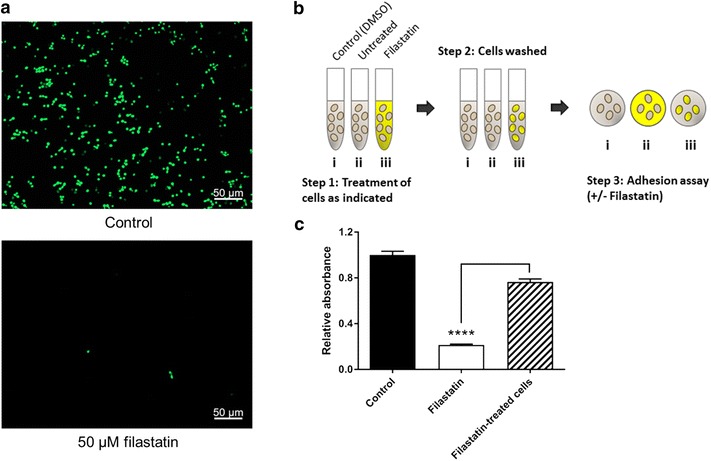Fig. 4.

The anti-adhesion effect of Filastatin depends on a continuous exposure to the drug and does not affect C. albicans viability. a C. albicans cells are viable upon exposure to Filastatin. Microscopic imaging of untreated cells attached to bioactive glass (top panel, labeled control) indicate that cells were viable but were unable to attach when treated with Filastatin (bottom panel). Filastatin treated cells were removed from the incubation media and stained for viability to ascertain that 100% of the cells were accounted for. b Experimental design to compare SC5314 cells pretreated with Filastatin vs those under continuous exposure to Filastatin. Step 1 Cells were incubated with 1% DMSO (i), untreated (ii), or 50 µM Filastatin in 1% DMSO (iii). Step 2 After 15 min, all the cells were washed three times. Step 3 Adhesion assay using cell suspensions (i control, ii continuous exposure to Filastatin, or iii pre-treated with Filastatin). Yellow represents Filastatin in the media, or cells that were exposed to Filastatin. c C. albicans cells exposed to Filastatin either as a pre-treatment (hatched) or continuously (white) were unable to attach to bioactive glass as compared to the untreated cells (black). The decrease in adhesion is more dramatic when Filastatin is present continuously. Standard error bars displayed, p < 0.0001. Cell adhesion was measured using the crystal violet assay
